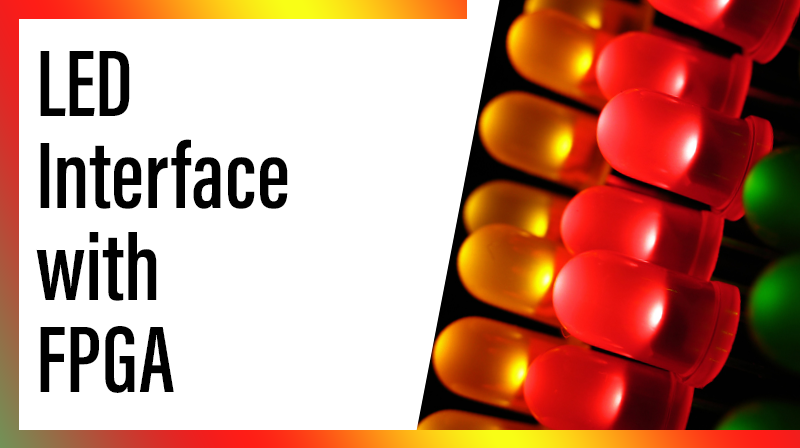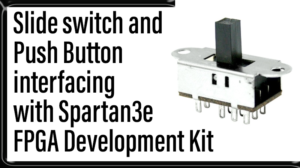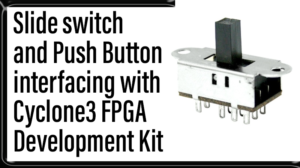
LED Interface with FPGA
LED interfacing with FPGA project Board
It’s always interesting to glow LED’s on any piece of hardware. What you can do with those LED’s? You can Blink them, you can Scroll from Left to Right and Right to Left, you can Count them , you can display any logic output which can be ‘0’ or ‘1’.
Spartan 6 FPGA project Board got array of 10 LED’s to perform all the above mentioned operations. We are here to explore more on how to perform binary counter with those LED’s.
Now we are going to construct 16- bit Binary Counter. The 16-bit Synchronous Binary Counter counts sequentially on positive edge of every clock cycle.
Schematics to interface LED with FPGA project Board
LED Placement in FPGA
VHDL Code for 16-Bit Binary Counter
library ieee; use ieee.std_logic_1164.all; use ieee.std_logic_unsigned.all; entity counter is port(Clock, PRE : in std_logic; Q : out std_logic_vector(15 downto 0)); end counter; architecture bhv of counter is signal tmp: std_logic_vector(15 downto 0); begin process (Clock, PRE) begin if (PRE='1') then tmp <= (others => '0'); elsif (Clock'event and Clock='1') then tmp <= tmp + 1; end if; end process; Q <= tmp; end bhv;
UCF_FILE
NET "Q[0]" LOC = P34; NET "Q[1]" LOC = P35; NET "Q[2]" LOC = P38; NET "Q[3]" LOC = P40; NET "Q[4]" LOC = P41; NET "Q[5]" LOC = P43; NET "Q[6]" LOC = P44; NET "Q[7]" LOC = P45; NET "Q[8]" LOC = P58; NET "Q[9]" LOC = P59; NET "Q[10]" LOC = P61; NET "Q[11]" LOC = P62; NET "Q[12]" LOC = P64; NET "Q[13]" LOC = P66; NET "Q[14]" LOC = P67; NET "Q[15]" LOC = P74; NET "Clock" LOC = P85; NET "PRE" LOC = P57;



